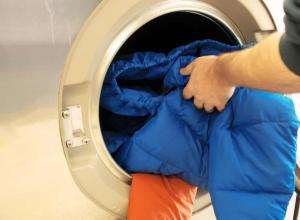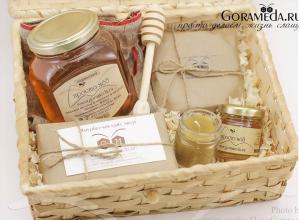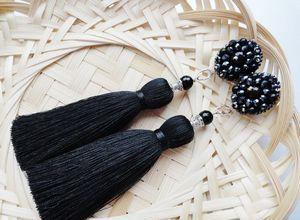List of what to take to Karelia on an excursion. What to take on a trip to Karelia? Rules of conduct on excursion routes of the Solovetsky Museum-Reserve
Date of publication: 24-10-2015, 15:41
Holidays in Karelia have recently become very popular among Russians. This is understandable, since these places are among the most attractive and picturesque in our country. In addition, most doctors argue that it is necessary to rest in areas that are similar to permanent residence. To do this, you can visit tourist centers in Karelia, of which there are now a great many.
As for recreation itself, fishing is very common here. The trip itself must be planned with special care and in advance. It is preferably recommended to use a list that has been compiled in advance. The number of things and accessories will depend on the type of fishing and the level of comfort that a person prefers.
What things will you need?
A place like Karelia should be visited by car. If you are planning a long trip to nature, then you should take care of preparatory transport procedures in advance. The nature of Karelia consists of reservoirs, rivers, gorges and rocks. It is desirable that the car be spacious. You can also take a trailer with you to transport a boat with a motor.
You need to take care when choosing a boat. You should preferably take boats or boats that can overcome large waves. When choosing gear, lures and bait, you should decide on the type of fish you intend to catch. It is advisable to take spare parts and consumables with you. As for the nozzle, it can be dug up near a reservoir.
If you are planning a vacation without home, then you should take tents (double if possible) with a high level of water resistance. In this case, inflatable mattresses can be used. If there is a tent, then cots will be suitable for relaxation.
For fishing in Karelia you need to take warm clothes. You will probably need hats, warm jackets, sweatshirts. Shoes include boots, slippers and sneakers. To prepare food you will need plates, pots, mugs, spoons, forks and knives. As for food, there should be plenty of it. In addition, it is worth taking a flashlight, an axe, matches, watches, candles, and protective equipment against mosquitoes and midges.
For rafting in summer:
1. Sneakers or sneakers (or special neoprene socks/shoes).
2. Light, quick-drying sports suit (sweatpants + windbreaker).
3. T-shirt
4. Shorts
5. Swimming accessories (swimsuit, swimming trunks).
6. Cap or visor.
7. Sunglasses.
8. Protective gloves (bicycle or underwear gloves, but regular work gloves will do).
For rafting in spring or autumn:
1. Neoprene or wool socks.
2. Neoprene gloves.
3. Dry or wet wetsuit.
Bedding:
1. Sleeping bag, mat, tent. (If you don’t have your own, you can rent it at the camp site, see information below).
2. Pillowcase. (Soft things are put in it at night and it replaces the pillow).
3. Bed sheet. (Not necessary, but during the peak summer heat it allows you to sleep more comfortably).
1. Spare T-shirts and a set of underwear.
2. Long sleeve shirt.
3. Warm sweater - fleece or wool.
4. Tight pants or jeans.
5. Jacket with a hood (storm jacket, windbreaker).
6. Shorts
7. Thermal underwear or warm underwear.
8. Socks - thin and woolen;
9. Sneakers, sandals, boots - for walking in the camp.
10. Rubber boots (a must for Karelia).
11. Headdress. For warm and cool weather.
12. Swimming suit, towel.
13. Personal hygiene items and toiletries.
14. KLMN (mug, spoon, bowl, knife).
1. Personal first aid kit and “favorite” medications.
2. Flashlight. A headlamp is preferable.
3. Polyurethane foam (back).
4. Sunglasses
5. Toiletries (toothbrush, toothpaste, etc.)
6. Sunscreen.
7. Insect repellents.
8. Matches or lighter. Preferably in sealed packaging.
9. Passport or other documents. Preferably in sealed packaging.
10. Pocket money.
11. Camera or camera with a set of spare batteries in a sealed package
12. Gloves or work gloves.
13. Fishing gear (for fishing enthusiasts).
One set of clothes must be made of wool, fleece or a material with similar characteristics; the temperature in Karelia, even in summer, can drop to 10 degrees and below, it is frivolous to go to Karelia in just a T-shirt and shorts. For footwear, it is advisable to have light, quick-drying slippers or sneakers for the kayak (everyone will have to walk on the water during the route) and sneakers for parking.
We will provide the following equipment:
1. Kayak, RAFT, kayak, catamaran (depending on the route)
2.Life jacket
3. Tent (2-4 people)
4. Polyethylene foam mat
5.Sleeping bag (if you don’t have your own)
6. A set of cooking pots, an ax, a saw.
7. Hermetic packaging for things (pack your things in plastic bags).
8.Group tent
9. A set of food products hermetically packaged according to the menu.
10. The price of the tour includes: rental of special equipment: watercraft, waterproof bags, life jackets, helmets (if necessary), rental of campfire equipment, campfire tent, work of a guide, transfer, accommodation in a tourist center, work as a cook in a tourist center, food for a complete diet meals along the route, sauna and lunch at the end of the route.
The price of the tour does not include: rental of a sleeping bag, tent and rug. This
Attention: Since 2015, we do not issue neoprene suits during the cold season due to hygiene requirements. According to sanitary standards, a neoprene suit is equivalent to underwear.
With warmer weather and a new hiking season ahead of us, now is the time to check out your gear and prepare for your next adventure. Today we will talk about what we took with us on a hike in Karelia for a week. That is, we will take our list and comment on it.Our trip took place in mid-August, which means it was a relatively warm time of year. Our route also included a visit to and. We do not encourage you to follow exactly this list of things on a hike, but it (the list) is not much different from the one we followed on other hikes. We will also try to guide you by weight.
So, here is a list of things for relatively easy hikes in the summer:
- Tent. Well, it's hard to forget her. However, make sure that the tent bag also contains the poles and pegs with which the tent is secured. Even if for some reason you do not have sleeping bags and bedding, you will already be protected from the wind and cold. Yes, we tested it ourselves) The weight of our three-person, two-layer tent with additional elements is 3.7 kg. We advise you not to skimp on weight by purchasing a single-layer tent.
- Tent pad. It's also foam or mat. It so happened that we had one wide bedding for two. The downside is that it folds, and moisture can penetrate through the seams (if, of course, you put it directly on the ground). It takes up more space than one mat, I had to attach it to the outside of the backpack, but it is one. And the rugs wouldn't fit inside either. In general, it is approximately equivalent to one bedding or two rugs, each one is more comfortable in their own way. Weight approximately 600-700 grams
- Sleeping bags. We took summer sleeping bags with a comfort temperature of 10-25 °C. Ours are quite heavy; 1.2 kg, we now have lighter ones made from new material.
- Pendal. He's a jerk. She's the nurse. A very comfortable thing, you can sit on it, put it under your lower back while sleeping, use it as a tray, or fan a fire. In general, a really useful thing.
- Axe, saw. We found both tools useful. But there is a choice, take the axe. Of course, it is better to purchase compact tools. Folding hacksaw - 310 grams, Ax - 650 grams.
- Flashlight. Or rather, several. Of course, we check their functionality and the presence of batteries.
- Matches, lighter. No comments.
- Flint knife. A very useful gift from friends. Includes a good flint that has helped us out more than once, as well as a knife and a flashlight.
- Kindling. It is still advisable to take it with you, especially in.
- Dry fuel. I, an opponent of dry fuel, say that next time we will take more! It would be good if, in addition, the package included a stand for these tablets, on which you can place a mug and boil water. We used 3 tablets in very rainy weather.
- Wood chip stove. We plan to collect it, something that was missing during the hike. We plan a weight of 800-1000 grams
- Gas burner. We don’t have it, but we still used it, thanks to our neighbor in the parking lot. We don’t plan to purchase, for now the choice is in favor of a wood chip stove. These things can be useful where it is prohibited to make fires or for cooking food in the rain. Also for short stops, when you need to quickly heat or cook something.
- Collapsible canister. Generally a useful thing for storing water. We didn't use it much on this trip, but it takes up little space, and it's lightweight.
- Ropes. Just in case. It seems like we haven't used it, but it's worth taking. To hang something, to secure it, there are many uses for it.
- Notebook. With recorded important phone numbers and other information about the hike. And also leave a note, use it as kindling, or draw in the end.
- Pencil. It’s better than a pen that might run out or leak.
- Packages. Just empty bags. Under garbage, dirty things, dirty dishes, you never know why. In general, packages are in short supply.
- Hot water bottles. It is convenient to take disposable small heating pads. I used 2 or 3 in a week.
- Bowler hat. It is convenient if the lid to the pot is in one person and the frying pan. Here again there is nothing to say, it’s a necessary thing. We have 350 grams
- Shared plates. I didn’t want to take them, but we used them very actively. By common plates we mean dishes where you can put clean food and vegetables. And what is most in demand, use it as a board. Still, you can do without shared utensils. But our plates were light. So why not make camping life more comfortable.
- Skewers. I don't know what they do on the list of things. Apparently it was left over from a barbecue outing. There is no need to take them) They weigh, but the sharp ends also need to be wrapped. Well, unless you went out for the day to cook kebabs on skewers.
- Thermos. We left it at home to save space and weight. Sometimes it wasn’t enough to warm up with hot tea, but we made do.
- KLMN - Mug Spoon Bowl Knife. A set of dishes for everyone. It is very convenient if you have a light catch that combines a spoon, fork and knife. The knife, however, is more for show, but I am very pleased with this thing. A mug for 200 ml - 90 grams, for 500 ml - 100 grams.
- Wineskin. Why exactly it - It is very convenient to carry with you, hanging it on your neck. This is a huge plus. A fairly light thing, 150 grams, thanks to its shape, it is more convenient to pack into a backpack than a bottle.
- Teapot. You don't have to take it if you're happy with tea bags. But it was delicious for us to drink custard)
- Dish sponge- we realized that it was still needed.
- Insect repellents.
- Sun cream.
- Toilet paper.
- Wipes, Wet wipes. They are used up very quickly.
- Handkerchiefs.
- Antiseptic, Soap. We hardly used antiseptic, so you don’t need to take it, napkins are more multifunctional. Soap can be used to wash both hands and greasy dishes. We'll definitely take it.
- Towel. We managed without it, but for comfort it’s better to take it. Especially if you plan to swim. And also after cold water I wanted to dry my hands.
- Comb.
- Mirror- not only for those who will shave. There are times when it is needed, for example, it is better to remove a speck from your eye yourself, looking in the mirror.
- Razor, shaving products. If this action is planned.
- Toothbrush, toothpaste.
- Shampoo. You don’t have to take it, but it is available in small paper packages.
- Scissors.
- File, tweezers, tweezers- not only for beauty on a hike, you can use tweezers to pull out a tick (lucky, we didn’t have to)
Where you don't need to save weight is the first aid kit. Although it usually doesn’t weigh that much anyway.
- Pain reliever, Hydrogen peroxide(available in small bottles of 5 ml), Plaster, Bandage, Charcoal, For severe poisoning, Antiviral, Nasal drops, For sore throat, Eye drops, Allergy medicine (even if you don’t seem to have allergies, it may manifest itself from midge bites), Anti-sickness tablets, if necessary. Ointment for sprains. We probably weighed about 200-300 grams.
- Personal first aid kit tailored to your needs.
Thread, needle, glue, tape, tent patches. Maybe someone else will take something.
Photos and other equipment
- Camera, 2-3 memory cards, battery(2 or more are also better).
- Additional equipment. Well, who else takes what, if he takes it. Lenses, film, lens hoods, filters, cloth...
- Charger for the camera. If it is possible to charge, of course.
- Bag. together plus or minus 1.5-2 kg
- Tripod, monopod. It would seem why. In the Urals I realized how it was not enough, so we carried a tripod weighing 1.3 kg.
- Telephone, Phone charger.
- Portable charger. It's better to take this thing. True, you won’t be able to charge your camera from it.
- Flash drive. We transferred photos from the first part of the trip to it.
Of course, there is no clear list, especially since we bought food along the way. But it’s better not to forget about:
- Salt, pepper, sugar, oil(on which to fry).
- Tea, coffee.
- Packed rations. Muesli worked great.
- Water We calculate approximately 1-1.5 liters/day per person in warm weather.
- Nice stuff. This is something you can enjoy yourself with. Chocolate, candy. In moderation, of course. The body needs sugar while hiking.
- Dried vegetables. Made as an experiment. Very pleased. Light, take up little space, perfectly complement soup and main courses. We recommend!
- We recommend taking custard products, which we simply fill with hot water. Cereals (buckwheat went with a bang), couscous, porridge. The soup, which you just need to pour boiling water over, also came in handy. Once a year is possible.
- What needs to be boiled was also prepared: rice and pasta. As for pasta, it’s better to take something like stars or vermicelli. They take up less space than those that are hollow inside.
- Meat products we shopped along the way. Hard smoked sausages can be taken from home, or it is good to prepare jerky or dried meat.
- Socks(warm and spare). For a week with 1 wash per person there were 4 regular pairs, 1 wool pair. It’s good that I didn’t post them, they really saved me at night.
- Gloves. You can get by with workers here, if it's not too cold.
- Warm jacket. Fleece suits well, as the material retains heat well and, importantly, dries quickly. A wool sweater takes up more space and is heavier.
- Just a jacket. Better than 2. Very pleased with the vests. Inexpensive, comfortable, nice material.
- Jacket ().
- T-shirt, T-shirt. You can dress it up by creating layers.
- Underwear.Swimsuit (this is not necessary in any case if every gram is important)
- Spare pants. Better waterproof ones.
- Underpants. Comfortable to sleep, you can dress it up. Mine fell victim to the campfire.
- Raincoat.
- Hat (bandana), Cap. You don’t have to take a cap, but it provided additional protection from the sun for me. We highly recommend buff type products that can be used as a bandana, balaclava, scarf, etc. We slept exclusively in bandanas. If your sleeping bag does not have a hood (suddenly), take a hat.
- Scarf. It came in handy, though. This is our summer)
- Spare shoes. Necessarily. Some experienced her absence firsthand. But nothing, but I didn’t have to drag it. Well, you don’t have to take it for a couple of days if you are confident in your shoes. You can leave your spare lightweight boots on at camp to give your feet a rest from your hiking boots.
- Sunglasses.
- Documents(passport, medical policy, student document, license)
- Money
- Reservations, tickets
- Printed cards. You shouldn’t rely entirely on gadgets either.
- House keys It’s also advisable to take it)
- Hermetic cover, Convenient place to store documents
It's important to take waterproof cover for a backpack, at least one. The bedding secured outside did not get wet. Inside, by the way, the unprotected backpack was also dry.
Weight of backpacks at the beginning of the hike:
Katya: 10 kg (by the end minus 2 kg)
Sasha: 14 kg (by the end 12-13 kg)
Note that the weight of the backpacks became less not only because we ate food, but also because we put some things on ourselves. And we carried the collected lingonberries and something else in a separate bag.
This is where we will probably end our detailed story. Let us remind you that this was a list of things for 8 days. Of these, 3 days in nature, a day in a hotel, and again 4 days in nature. 10-18 °C, often. Replenish food and water supplies along the way. Hmm, everything seemed simple, but my shoulders still hurt. Well, nothing) In fact, everything that should have been useful was useful. It’s good that the first aid kit remained almost untouched)
We haven’t discovered anything new for experienced tourists, but we hope it will be useful for those who are starting to hike.
Look forward to stories about our travels and sharing with friends!Good travels to everyone!
Kalevala every time answers a popular question, even two questions: “What clothes should I take with me in winter to Kalevala?”, “Do you give out special clothes and shoes in January/February/March?” and “Are felt boots available for rental?”
If you participate in our programs: or anything else, including master classes on ice fishing, then we will definitely issue our branded and special “VelT” equipment, which is intended for such trips. It's comfortable and warm! There is no need to bring sheepskin coats and felt boots with you to Kalevala! It's not as cold here as some of you might initially think. And our winter is comfortable. By the way, about felt boots. If you really want to completely distance yourself from civilization, then we will give you felt boots for free!
Regarding clothes in general. Kalevala is not the North Pole. We have quite comfortable winter weather, of course, taking into account the fact that many in the cities are simply unaccustomed to real winter, that after all, Kalevala is northern Karelia, open spaces and water, even if frozen, means that sometimes wind and some relative humidity. But taking into account the cleanliness of our air, we definitely have a comfortable winter. Real! Therefore, we recommend:
We don’t argue whether twenty-five or thirty-five degrees below zero (we’ll overestimate it just in case) is quite frosty weather. Nevertheless, the right choice of clothing allows you to enjoy the Kalevala winter without the risk of turning into an ice statue. And as you know, the secret of the winter dress code in the north of Karelia is the correct alternation of the right layers of clothing.

Wear warm underwear and wool socks. If the thermometer shows minus twenty degrees or even lower, put on an additional layer of wool or fleece over your underwear. An extra pair of warm socks will keep your feet warm. Warm pants or trousers, a scarf or a high warm collar, as well as comfortable and warm winter shoes will allow you to be outdoors for a long time, even in severe frost.
Thick winter jacket, warm hat and thermal gloves. Don't forget to button up and tuck your gloves into your sleeves. Ready! You can go on a winter adventure in Kalevala!

So, if you have the right clothes, the Kalevala winter is not terrible, but on the contrary, it is very pleasant. Are you still in doubt? Think for yourself: what would winter be without snow? And what is snow without sub-zero temperatures? After all, real winter is white taiga and snow-covered lakes!
Latest site materials
Experience

How to wash a white down jacket How to wash stains on a white jacket
The most practical item in the wardrobe of men and women is a jacket. Manufacturers regularly produce a variety of models from natural, synthetic and semi-synthetic materials. It is very important when purchasing to familiarize yourself with the rules for caring for chickens.
Horoscope

Gift to create comfort
80 years is the age when a woman needs to be given gifts that help her, so it is worth paying attention to such gifts, and not to cosmetics and jewelry. Remember that on this day it is more important than ever for grandma to feel warmth and love from her
Health

See what "Founding Fathers of the USA" are in other dictionaries
Modern America has its uncanonized saints. These are the so-called Founding Fathers - those people who played a key role in the founding and establishment of American statehood, winning independence and creating a prince
Cosmetology

Ideas and examples of bead earrings
Spectacular earrings began to enjoy popularity with the spread of Art Deco style in clothing and interior design in the first half of the twentieth century, which strives for clear and concise lines, simplicity of execution and bright color shades. Tassel earrings continue to remain
Cosmetology

Lesson in the middle group "New Year tree"
> New Year's games by Custom Search New Year's games Are your children waiting for Santa Claus? Let's check how ready they are for the New Year. Do they know how to properly decorate a Christmas tree? What does Santa Claus look like? I offer you games that will help you with small
